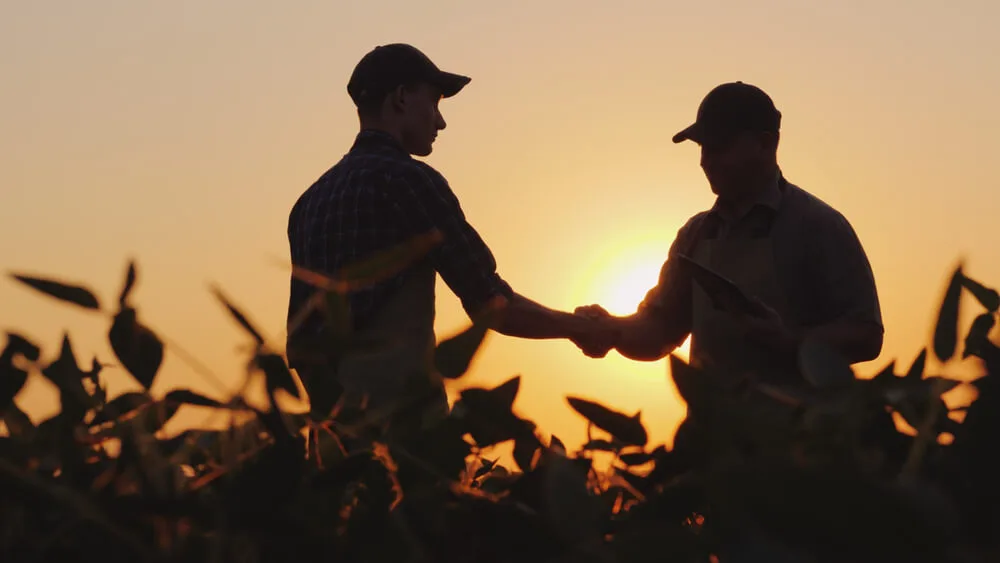
(Image via Shutterstock)
Crop yields may come in behind average as scattered showers and thunderstorms fail to make up for a lengthy stretch of not enough rain.
Persistent dry conditions throughout Wisconsin have led to a natural disaster designation from US Agriculture Secretary Tom Vilsack, a move that will allow farmers in 27 counties to access emergency lines of credit in order to protect themselves against the possibility of extremely low crop yields.
The emergency loans are available through the US Department of Agriculture’s Farm Service Agency (FSA) because of drought and near-drought conditions due to a lack of rainfall. Some areas in the state have received as much as nine inches of rain less than usual over the past three months.
Producers can learn more about the loans from their local FSA office and through the Wisconsin Department of Agriculture, Trade and Consumer Protection drought resource page.
“We’re continuing to do everything we can to support our farmers and their families, and we appreciate the help from our federal partners and USDA Secretary Vilsack to support our state’s farmers and our local communities during the recent drought conditions,” said Wisconsin Gov. Tony Evers. “I encourage eligible Wisconsin producers to access these critical resources that are available through this designation, including assistance like emergency loans.”
Vilsack’s designation is primarily targeted to farmers in Adams, Columbia, Crawford, Dane, Dodge, Grant, Green, Iowa, Jefferson, Juneau, Lafayette, Marquette, Monroe, Richland, Rock, Sauk, and Vernon counties. Producers in contiguous counties are also eligible for the assistance: Fond du Lac, Green Lake, Jackson, La Crosse, Portage, Walworth, Washington, Waukesha, Waushara, and Wood counties.
In the USDA’s new crop report for Wisconsin, topsoil moisture is rated almost 20% very short, 43% short, 38% adequate, and 0% surplus. Corn silking is 25% complete, five days behind the five-year average. The soybean crop is 57% bloomed, three days behind average. Oat condition is 42% good to excellent, similar to last week.
Winter wheat is 24% harvested, about average for this time of year. And the second cutting of alfalfa is 91% complete, two days ahead of last year and seven days ahead of average.
Support Our Cause
Thank you for taking the time to read our work. Before you go, we hope you'll consider supporting our values-driven journalism, which has always strived to make clear what's really at stake for Wisconsinites and our future.
Since day one, our goal here at UpNorthNews has always been to empower people across the state with fact-based news and information. We believe that when people are armed with knowledge about what's happening in their local, state, and federal governments—including who is working on their behalf and who is actively trying to block efforts aimed at improving the daily lives of Wisconsin families—they will be inspired to become civically engaged.


New Biden rules deliver automatic cash refunds for canceled flights, ban surprise fees
In the aftermath of a canceled or delayed flight, there’s nothing less appealing than spending hours on the phone waiting to speak with an airline...

One year on the Wienermobile: The life of a Wisconsin hotdogger
20,000+ miles. 16 states. 40+ cities. 12 months. Hotdogger Samantha Benish has been hard at work since graduating from the University of...

Biden makes 4 million more workers eligible for overtime pay
The Biden administration announced a new rule Tuesday to expand overtime pay for around 4 million lower-paid salaried employees nationwide. The...

‘Radical’ Republican proposals threaten bipartisan farm bill, USDA Secretary says
In an appearance before the North American Agricultural Journalists last week, United States Department of Agriculture (USDA) Secretary Tom Vilsack...





